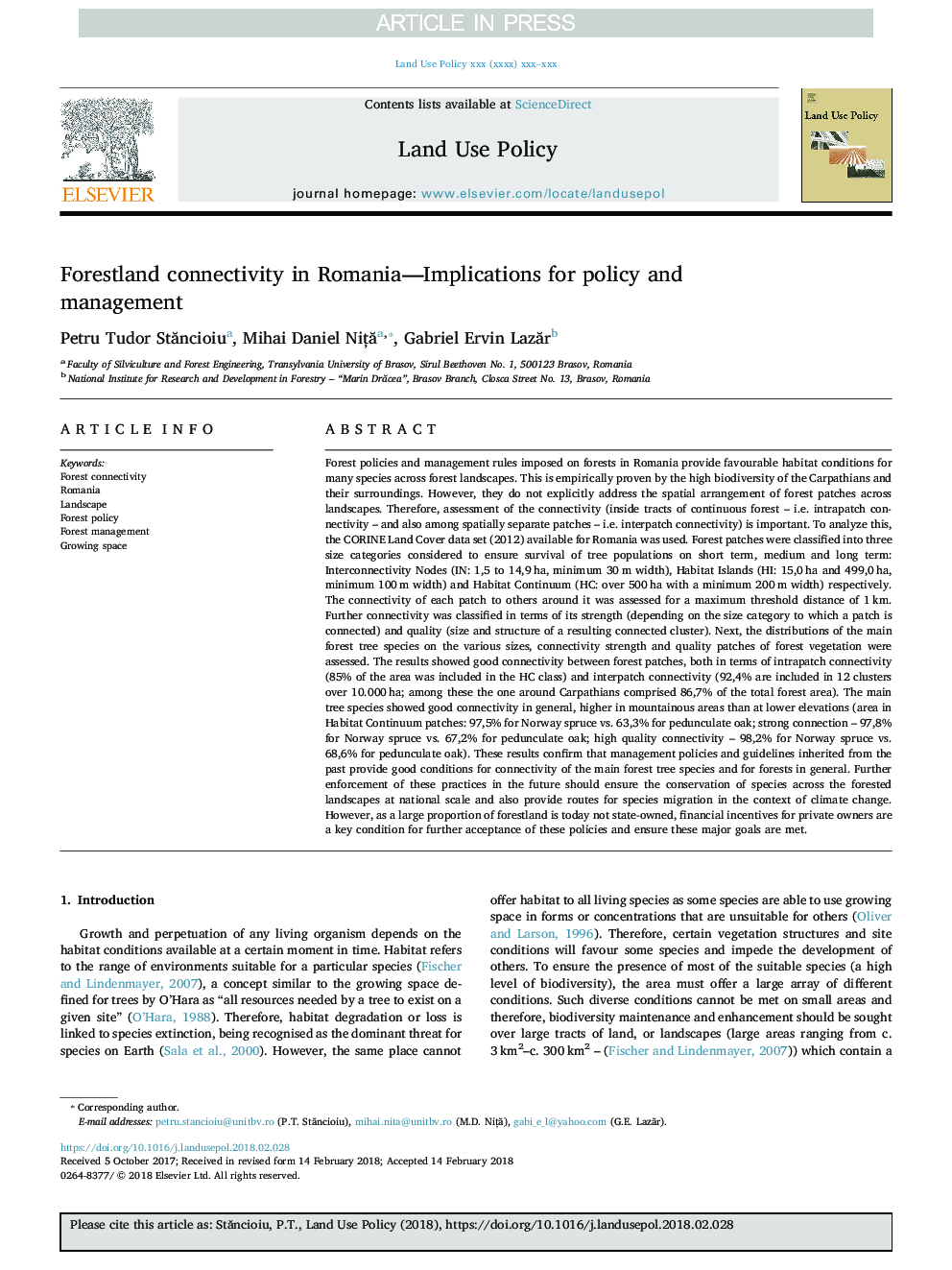| کد مقاله | کد نشریه | سال انتشار | مقاله انگلیسی | نسخه تمام متن |
|---|---|---|---|---|
| 6546293 | 1421807 | 2018 | 13 صفحه PDF | دانلود رایگان |
عنوان انگلیسی مقاله ISI
Forestland connectivity in Romania-Implications for policy and management
ترجمه فارسی عنوان
ارتباطات جنگل در رومانی - پیامدهای سیاست و مدیریت
دانلود مقاله + سفارش ترجمه
دانلود مقاله ISI انگلیسی
رایگان برای ایرانیان
کلمات کلیدی
اتصال جنگل، رومانی، چشم انداز، سیاست جنگل، مدیریت جنگل، فضای در حال رشد،
موضوعات مرتبط
علوم زیستی و بیوفناوری
علوم کشاورزی و بیولوژیک
جنگلداری
چکیده انگلیسی
Forest policies and management rules imposed on forests in Romania provide favourable habitat conditions for many species across forest landscapes. This is empirically proven by the high biodiversity of the Carpathians and their surroundings. However, they do not explicitly address the spatial arrangement of forest patches across landscapes. Therefore, assessment of the connectivity (inside tracts of continuous forest - i.e. intrapatch connectivity - and also among spatially separate patches - i.e. interpatch connectivity) is important. To analyze this, the CORINE Land Cover data set (2012) available for Romania was used. Forest patches were classified into three size categories considered to ensure survival of tree populations on short term, medium and long term: Interconnectivity Nodes (IN: 1,5 to 14,9â¯ha, minimum 30â¯m width), Habitat Islands (HI: 15,0â¯ha and 499,0â¯ha, minimum 100â¯m width) and Habitat Continuum (HC: over 500â¯ha with a minimum 200â¯m width) respectively. The connectivity of each patch to others around it was assessed for a maximum threshold distance of 1â¯km. Further connectivity was classified in terms of its strength (depending on the size category to which a patch is connected) and quality (size and structure of a resulting connected cluster). Next, the distributions of the main forest tree species on the various sizes, connectivity strength and quality patches of forest vegetation were assessed. The results showed good connectivity between forest patches, both in terms of intrapatch connectivity (85% of the area was included in the HC class) and interpatch connectivity (92,4% are included in 12 clusters over 10.000â¯ha; among these the one around Carpathians comprised 86,7% of the total forest area). The main tree species showed good connectivity in general, higher in mountainous areas than at lower elevations (area in Habitat Continuum patches: 97,5% for Norway spruce vs. 63,3% for pedunculate oak; strong connection - 97,8% for Norway spruce vs. 67,2% for pedunculate oak; high quality connectivity - 98,2% for Norway spruce vs. 68,6% for pedunculate oak). These results confirm that management policies and guidelines inherited from the past provide good conditions for connectivity of the main forest tree species and for forests in general. Further enforcement of these practices in the future should ensure the conservation of species across the forested landscapes at national scale and also provide routes for species migration in the context of climate change. However, as a large proportion of forestland is today not state-owned, financial incentives for private owners are a key condition for further acceptance of these policies and ensure these major goals are met.
ناشر
Database: Elsevier - ScienceDirect (ساینس دایرکت)
Journal: Land Use Policy - Volume 76, July 2018, Pages 487-499
Journal: Land Use Policy - Volume 76, July 2018, Pages 487-499
نویسندگان
Petru Tudor StÄncioiu, Mihai Daniel NiÈÄ, Gabriel Ervin LazÄr,
